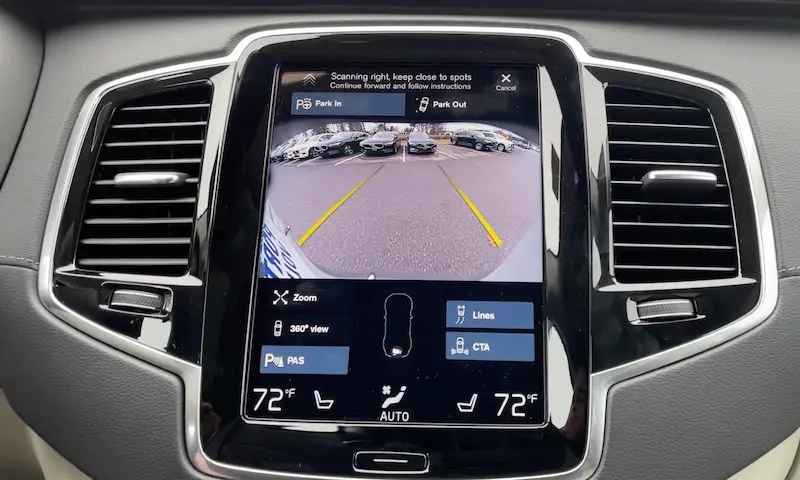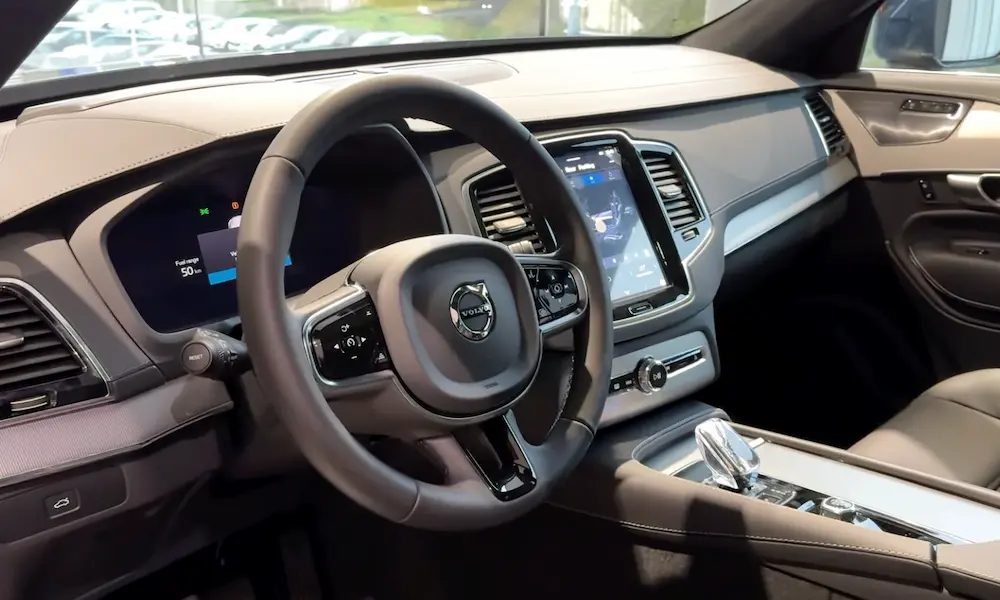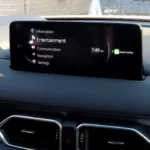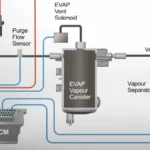Your Volvo suddenly slows down, a turtle icon appears on your dashboard, and you see “Reduced Engine Performance” displayed. Don’t panic – this is your car’s way of protecting itself from potential damage. This protective measure, commonly called “limp mode,” limits your vehicle’s power output while allowing you to safely reach a service center.
Understanding why this happens and how to address it can save you time, money, and stress. Let’s dive into everything you need to know about Volvo’s reduced engine performance mode – from common causes to effective solutions.
What is Limp Mode and Why Does It Matter?
The Protective Function of Limp Mode
Limp mode (or “safe mode”) activates when your Volvo’s Engine Control Module (ECM) detects something operating outside safe parameters. Think of it as your car’s self-defense mechanism – it deliberately restricts performance to prevent expensive damage.
When activated, your Volvo typically:
- Limits speed to about 30-50 mph
- Restricts engine RPM to around 2,000-3,000
- Displays warning messages and the turtle icon
- Allows basic mobility to reach safety or a repair shop
This protection system is quite sophisticated, giving you just enough power to get somewhere safe while preventing conditions that could lead to catastrophic engine failure.
Warning Signs You Shouldn’t Ignore
When your Volvo enters reduced performance mode, you’ll notice several warning indicators appearing together:
- The primary “Reduced Engine Performance” message
- The distinctive turtle icon on your dashboard
- Check engine light illumination
- Possible temperature warning symbols
- System-specific indicators depending on the root cause
These warnings are your car’s way of communicating that something needs immediate attention. The turtle icon specifically indicates that performance limitations are intentional rather than random mechanical failure.
Most Common Causes of Reduced Engine Performance
Throttle Body and ETM Problems
The throttle body system is one of the most frequent culprits behind reduced engine performance in Volvos. The Electronic Throttle Module (ETM) controls airflow into the engine, and when it malfunctions, your ECM limits power as a safeguard.
You might notice:
- Erratic idle speeds
- Sudden throttle response issues
- Vehicle jumping to unusually high RPMs during startup
- Hesitation during acceleration
- Inconsistent idle behavior
Carbon buildup within the throttle body is particularly common. Over time, deposits accumulate on the throttle plate and housing, restricting airflow and causing erratic sensor readings. Regular cleaning can prevent many issues, though severely contaminated units may need replacement.
Mass Airflow Sensor (MAF) Failures
Your MAF sensor measures incoming air and helps your ECM calculate the proper fuel mixture. When it fails, your engine can misfire, hesitate during acceleration, stall, and ultimately trigger reduced performance warnings.
MAF failures typically progress through stages:
- Initial hesitation during acceleration and reduced fuel efficiency
- Rough idling and jerky acceleration
- Engine stalling, particularly at idle
- Complete performance reduction
A simple diagnostic you can try is the “tap test” – gently tap the sensor while the engine is running. If the idle immediately changes, this suggests internal sensor damage.
Diesel Particulate Filter (DPF) Blockage
For Volvo diesel owners, DPF clogging represents a significant cause of reduced engine performance. The DPF captures soot particles from diesel combustion and periodically burns them off through regeneration cycles.
When severely clogged, it:
- Restricts exhaust flow
- Reduces turbocharger efficiency
- Triggers performance limiting measures
The regeneration process requires specific driving conditions – sustained speeds above 37-50 mph for extended periods – to reach temperatures needed to burn off accumulated soot. If you mainly drive short distances, your DPF may never properly regenerate.
Warning signs include black smoke from the exhaust, poor fuel efficiency, and DPF-specific warning lights.
Fuel System Issues
Fuel delivery problems can also trigger reduced engine performance. The system includes multiple components – fuel pump, filter, injectors, and pressure regulator – each potentially causing issues when malfunctioning.
Common fuel system problems include:
- Fuel pump failures (causing intermittent power loss, difficult starting)
- Clogged fuel filters (restricting fuel flow, especially under acceleration)
- Dirty or failing fuel injectors (causing misfires and poor combustion)
- Pressure regulator issues (creating improper fuel pressure)
Regular maintenance like fuel filter replacement can prevent many of these problems before they cause performance reductions.
Ignition System Failures
Spark plug and ignition coil failures can trigger reduced engine performance warnings. Modern Volvo engines use individual ignition coils for each cylinder, and failure of even one can cause significant performance issues.
Signs of ignition system problems include:
- Rough idle
- Hesitation during acceleration
- Noticeable power loss
- Engine misfires
Your ECM monitors ignition performance and will limit engine power when it detects misfires to prevent damage to the catalytic converter. Regular replacement of spark plugs (typically every 60,000-100,000 miles) can prevent most ignition-related performance issues.
Critical Sensor Failures
Modern Volvos rely on numerous sensors to monitor and control engine operation. Key sensors include:
- Oxygen sensors
- Throttle position sensor
- Intake air temperature sensor
- Engine coolant temperature sensor
Each provides specific data that helps optimize engine performance and emissions. When these sensors fail, they send incorrect information to your ECM, which may trigger reduced performance mode as a precaution.
How to Diagnose Reduced Engine Performance
OBD-II Diagnostic Scanning
The first step in proper diagnosis is retrieving the diagnostic trouble codes (DTCs) stored in your vehicle’s ECM. These codes provide valuable clues about what triggered the performance reduction.
Professional-grade diagnostic tools offer:
- Access to manufacturer-specific codes
- Live data streaming
- Component testing capabilities
- System adaptation functions
While basic OBD-II scanners available to consumers can read generic fault codes, some Volvo-specific codes may require professional equipment. Many auto parts stores offer free code reading services, providing an initial diagnostic starting point.
Advanced Diagnostic Approaches
Beyond basic code reading, professional technicians use component-specific testing procedures to isolate the root cause:
- Throttle body diagnosis: Testing sensor voltage readings and performing adaptation procedures
- MAF sensor testing: Checking voltage outputs and dynamic response
- Fuel system diagnostics: Measuring fuel pressure, injector flow rates, and pump performance
- Turbocharger system checks: Verifying boost pressure and inspecting for intake leaks
These advanced techniques require specialized equipment but provide definitive answers about system performance.
Systematic Troubleshooting Methods
Effective diagnosis requires a systematic approach considering the relationships between various engine systems:
- Begin with basic checks (fluid levels, visual inspection, code reading)
- Test suspected systems based on retrieved codes and symptoms
- Verify repairs through comprehensive testing
- Document findings for future reference
This methodical approach prevents unnecessary part replacement and ensures accurate diagnosis.
| Common Warning Sign | Possible Causes | Initial Diagnostic Steps |
|---|---|---|
| Reduced power + turtle icon | Multiple potential issues | Retrieve fault codes, check fluid levels |
| Erratic idle + reduced power | Throttle body/ETM issues, vacuum leaks | Check for DTCs, inspect intake system |
| Hesitation + reduced power | MAF sensor, fuel system issues | Check for DTCs, inspect air filter, fuel pressure |
| Normal power until DPF warning | DPF blockage | Check mileage since last regeneration, verify warning messages |
| Misfiring + reduced power | Ignition system issues, fuel problems | Check spark plugs, ignition coils, fuel pressure |
Effective Solutions for Reduced Engine Performance
Immediate Response Actions
When your Volvo displays reduced engine performance warnings, try these immediate responses:
- Pull over safely and turn off the engine
- Wait 10-15 minutes, then restart
- Check fluid levels (oil, coolant, transmission fluid)
- Look for obvious problems like disconnected hoses or fluid leaks
For temporary glitches, this simple restart procedure may clear the issue. However, if warnings persist, professional diagnosis is recommended.
Throttle Body and ETM Repairs
Throttle body issues often require either cleaning or replacement:
Cleaning procedure:
- Remove the throttle body from the intake manifold
- Use specialized cleaner to remove carbon deposits
- Reinstall and perform adaptation procedures
For severely damaged throttle bodies, replacement is necessary. This complex procedure requires proper programming and adaptation using professional equipment.
MAF Sensor Maintenance
MAF sensor problems can often be resolved through:
Cleaning:
- Remove the sensor from the air intake system
- Spray with specialized MAF sensor cleaner (never touch the sensing element)
- Allow to completely air dry before reinstallation
If cleaning doesn’t work, replacement becomes necessary. Quality replacement sensors should meet OEM specifications to ensure accurate readings.
Fuel System Maintenance
Fuel system repairs vary depending on the component involved:
Fuel filter replacement:
- Locate the filter (often under the vehicle or near the fuel tank)
- Safely relieve fuel system pressure
- Install a new filter with proper orientation
Fuel pump replacement:
- More extensive work, often requiring removal of interior trim pieces
- Carefully extract the pump assembly while managing fuel spillage
- Install new pump meeting OEM specifications
Injector service:
- Professional cleaning equipment can often restore performance
- Severely damaged injectors require replacement
- Careful attention to torque specifications prevents leaks
DPF System Care
DPF problems in Volvo diesels require specialized procedures:
Forced regeneration:
- Uses diagnostic equipment to initiate high-temperature burn cycles
- Can clear minor blockages
- Requires specific safety precautions due to extreme exhaust temperatures
DPF cleaning or replacement:
- Severe blockages may require physical removal and professional cleaning
- Complete failure requires replacement (a significant expense)
Prevention is key – regular highway driving allows natural regeneration cycles, while using quality fuel and maintaining proper oil change intervals helps prevent premature failure.
Cost Considerations for Repairs
Typical Repair Expenses
Understanding typical costs helps you make informed decisions:
| Repair Service | Typical Cost Range |
|---|---|
| Diagnostic service | $100-200 |
| Throttle body cleaning/adaptation | $150-300 |
| Complete ETM replacement | $500-1,500 |
| MAF sensor replacement | $200-400 |
| Fuel pump replacement | $500-1,200 |
| Spark plug replacement | $100-250 |
| Fuel injector replacement | $1,000-2,500 |
| DPF replacement | $2,000-4,000 |
| Turbocharger repair/replacement | $2,000-5,000 |
These costs emphasize the importance of preventive maintenance and early problem recognition.
Selecting the Right Service Provider
When choosing where to service your Volvo, consider:
Volvo dealerships:
- Factory-trained technicians
- Genuine parts availability
- Access to latest technical information
- Often higher service costs
Independent European specialists:
- Specialized Volvo knowledge
- Quality aftermarket parts options
- Often more competitive pricing
- Personalized service
General repair shops:
- Potentially lower pricing
- May lack specialized Volvo knowledge
- Limited diagnostic capabilities for complex issues
Verify certifications, references, and diagnostic capabilities before selecting an independent shop.
Long-Term Service Planning
Consider these factors for long-term service planning:
- Check warranty coverage – many components may be covered under factory or emissions warranties
- Quality parts selection affects both immediate repair success and long-term reliability
- Establish relationships with qualified service providers
- Maintain detailed service records to track maintenance history
- Regular preventive maintenance by qualified technicians provides the best long-term value
Volvo’s reduced engine performance warnings are sophisticated protective systems designed to prevent catastrophic damage. Understanding the common causes – from throttle body issues to sensor failures – helps you respond appropriately when warnings appear.
The key to managing these issues is prompt professional diagnosis, followed by targeted repairs using quality components. While simple restart procedures might temporarily resolve some problems, persistent warnings require comprehensive attention to prevent costly damage.
Remember that preventive maintenance remains your best strategy for avoiding performance issues altogether. Regular service, quality fuel, and proper driving habits significantly extend component life and keep your Volvo running at peak performance.









